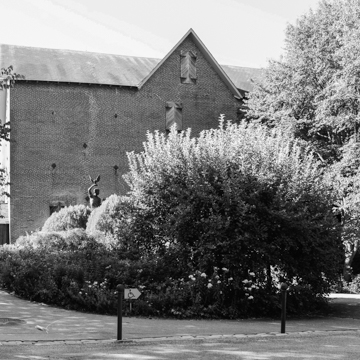George Brinton built the immense waterpowered grain mill at the end of the Civil War, after the village had been connected to the larger regional economy by the Baltimore Central Railroad. Slated for demolition in the 1960s, the mill was acquired by the Brandywine Conservancy and adapted as a museum of the region's culture by James R. Grieves of Baltimore. By concentrating circulation and services to the rear in a new wing that provides views of the creek, the multiple levels of the mill are left to house the remarkable regional collection centered on the works of Howard Pyle, N. C. Wyeth, Andrew Wyeth, and Jamie Wyeth.
You are here
Brandywine River Museum
If SAH Archipedia has been useful to you, please consider supporting it.
SAH Archipedia tells the story of the United States through its buildings, landscapes, and cities. This freely available resource empowers the public with authoritative knowledge that deepens their understanding and appreciation of the built environment. But the Society of Architectural Historians, which created SAH Archipedia with University of Virginia Press, needs your support to maintain the high-caliber research, writing, photography, cartography, editing, design, and programming that make SAH Archipedia a trusted online resource available to all who value the history of place, heritage tourism, and learning.




















